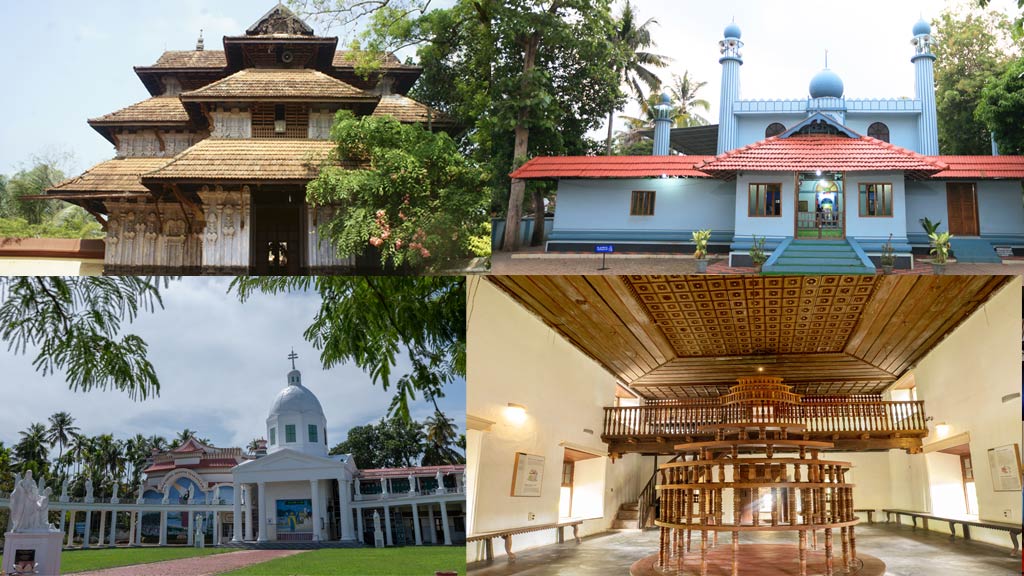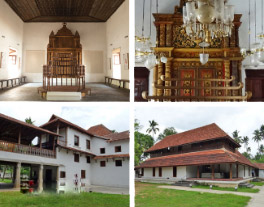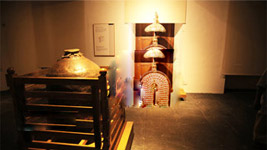Muziris The Salad Bowl of Religions

Through the ages Muzris became the salad bowl of many religions, and played host to varied religious practices, all of which contributed to the shaping of its rich cultural and historical landscape.
Hinduism
Until the time of the Cheras, the region followed Dravidian religious practices which included ancestor- and tree-worship, propitiation of totem gods, the spirit of Nature and so on. Jainism and Buddhism made their entry but did not strike deep roots. With the Aryanization of the land in the 8th century CE, Hinduism began to wield power. Simultaneously however, the Dravidian gods were accommodated into the fold. Thus along with Lord Vishnu and Shiva, Sastha, Kali, Durga and Bhagavathi also began to be worshipped. Its impact was naturally to be seen in Muziris too, as the sheer number of temples in the region indicate. One of the most prominent temples in Kodungallur then and now is the Sree Kurumbakkavu Kali temple. It existed even before the reign of the Chera Perumals.
Christianity
According to legend, Christianity reached the shores of Kerala during the time of Jesus Christ himself, when his follower St Thomas the Apostle set foot on the soil of Kodungallur in 52 CE. Besides being involved in conversion, he established churches along the Malabar coast. As a result, some of the oldest churches in Kerala are to be found in this region, particularly in places like Paravur and Chendamangalam. The rulers encouraged Christians in their trade too. The Copper Plate Grant of 1225 CE is evidence enough to show that ruler of Mahodayapuram granted a Christian merchant special rights and privileges.
Judaism
The first documented Jewish settlement in Kerala was in a village called Anjuvannam. It was gifted by King Bhaskara Ravi Varma of Kodungallur to the oldest ancestor of the Jews of Kerala, Joseph Rabban in 1000 CE. The famous Jewish Copper Plate Grant ratified the royal gift that gave Rabban special rights in perpetuity. In the years that followed, under the leadership of Joseph Rabban, the Jews prospered in the land and for many years since, Anjuvannam was known as the Jerusalem of the East. This led to the establishment of synagogues and cemeteries, and even to the assigning of their name to certain places (Jew’s Hill, Jew’s Tank, Jew Street and so on).
Islam
The link between Kodungallur and Islam is also a very old one. According to historians, Islam may have been introduced to Kerala through Arab traders in the 7th or the 8th century CE. However, according to popular legend, Cheraman Juma Masjid is the greatest evidence of this hoary connection. It was the first Muslim house of prayer, set up as far back as 628 A.D., on the land donated by Cheraman Perumal, the first Indian to convert to Islam. While the story behind his conversion is a touching tale of faith and devotion to Allah, modern historians argue that there is hardly any concrete evidence to corroborate this story.
A Jewish cemetery and the Chendamangalam synagogue are situated near the hillock of Kottayil Kovilakam, and enjoy proximity with the places of worship of three other faiths. The presence of a Sree Krishna temple, a mosque and a church within a distance of a few hundred metres of one another is the most ringing example of the strong culture of religious harmony that existed in the place.

